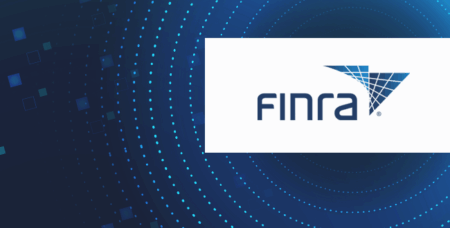The Future of Government Agency Records Archiving: What to Expect in the Next 5 to 10 Years
The role of agency archives is undergoing rapid change. Once viewed primarily as a compliance obligation or a back-office storage function, records archiving is now an essential infrastructure for maintaining public trust, ensuring digital continuity, and informing strategic decision-making. What was once a static repository is transforming into a living, responsive, and often cloud-based system for managing a growing universe of data.
Over the next five to ten years, this transformation is expected to continue accelerating. Technological innovation, evolving public expectations, and more complex regulatory demands will drive agencies to rethink their approach to archiving. If your agency hasn’t begun planning for this shift, now is the time.
Why it matters
Government records are no longer just compliance artifacts — they’re strategic assets that impact transparency, security, and public trust. As technology and regulations evolve rapidly, agencies must modernize their archiving approach now to avoid falling behind.
Technology trends driving the evolution
AI and machine learning are no longer optional
Artificial intelligence is already changing how records are managed. AI-enabled tools are helping public agencies move beyond manual classification and retention toward systems that can adapt in real time to shifting data patterns and policy requirements.
- Smarter classification: Rather than relying on static taxonomies, AI can analyze the content and context of documents to accurately classify them, eliminating the need for human input.
- Dynamic retention: Machine learning models can predict the appropriate retention period for a record based on risk, usage, and compliance history.
- Automated redaction: AI-driven redaction tools can identify and mask sensitive data at scale, particularly valuable for FOIA responses and legal reviews.
These capabilities are not just about efficiency — they also reduce errors and increase defensibility.
Cloud-native architecture takes the lead
Cloud archiving isn’t new, but over the next decade, it will become the dominant deployment model.
- Elastic storage and processing: The cloud enables agencies to store more data, scale with ease, and eliminate infrastructure bottlenecks.
- Interoperability: Leading platforms now offer integrations with widely used collaboration tools such as Microsoft Teams, Google Workspace, and Zoom, ensuring that communication data is captured and preserved from the start.
- High availability and redundancy: Native disaster recovery and built-in geographic redundancy provide peace of mind and regulatory resilience.
What sets cloud-native solutions apart is that they are built specifically to function in a given cloud, rather than being retrofitted to do so.
Blockchain and digital integrity
While still in early adoption stages, blockchain may play a growing role in verifying the authenticity and provenance of critical government records.
- Immutable audit trails: Blockchain-based solutions can clearly indicate when a record was created, who accessed it, and whether it has been altered.
Use cases may emerge for sensitive, high-integrity content such as election records, licensing systems, and official proceedings.
Smarter search with NLP
The days of keyword-only searching are giving way to more intuitive and powerful search tools.
- Conversational queries: Search tools will allow users to enter questions or phrases in natural language and receive highly relevant results.
- Contextual filtering: Advanced platforms can understand relationships between records, surfacing what matters most to a specific investigation or compliance inquiry.
Compliance, oversight, and legal accountability
Electronic records are the new mandate
Federal guidelines, such as NARA’s M-19-21, and state-level mandates continue to encourage agencies to adopt fully digital, accessible, and searchable recordkeeping practices. Paper is becoming the exception.
- Agencies are now expected to not only digitize historical records but also to build end-to-end digital workflows that preserve metadata and audit history.
AI regulation is emerging
As AI becomes embedded in government workflows, agencies will be held to new standards of oversight.
- Explainability and auditability: Agencies will need to document how AI systems classify records, apply retention, and manage access.
- Governance: Expect new requirements for human oversight, ethics, and data stewardship when using automation in records management.
Data privacy laws are expanding
New and emerging privacy laws, such as California’s CPRA and Colorado’s Privacy Act, are raising the bar for data protection.
- Data residency: Jurisdictions may require data to be stored and processed within geographic boundaries.
- Right to access and deletion: Agencies will be expected to handle citizen data rights requests with the same speed and transparency as the private sector.
Privacy-by-design and metadata-driven governance will become fundamental.
Rethinking the role of archives
Strategic insights from historical data
Government archives contain a wealth of institutional memory spanning decades. Agencies that treat these archives as strategic data assets, not just compliance checkboxes, will gain new visibility into operations and trends.
Examples include:
- Analyzing historical communications for risk signals or behavioral patterns
- Understanding community sentiment through public records
- Informing infrastructure planning or budget forecasting
Public transparency expectations are growing
Today’s constituents expect timely, digital access to public information. That expectation will only grow.
- Agencies that implement automated FOIA workflows and proactive disclosure portals will better meet the needs of citizens.
- Tools that enable secure redaction and publishing from a central archive will reduce legal risk while improving public trust.
Security must be assumed
Increased threat levels make security an integral part of the entire archive lifecycle.
- Access management: Role-based permissions, identity verification, and audit logging are critical.
- Encryption and integrity controls: Modern platforms must protect records both in transit and at rest.
- Zero-trust readiness: Every user and device must be verified before being granted access to sensitive records.
Building a modern archive program: A practical path forward
To be ready for what’s next, government agencies should take the following steps:
- Assess existing tools and workflows: Identify outdated systems, inefficiencies, and records at risk.
- Prioritize cloud-native solutions: Ensure future scalability, resilience, and integration.
- Pilot AI-driven features: Start with redaction, classification, or metadata tagging to build comfort and prove value.
- Update retention and privacy policies: Reflect the latest legal and operational realities.
- Train staff in digital governance: Help teams stay ahead of the technology curve with continuous learning.
- Embed archiving into broader modernization plans: Make records part of the IT roadmap, not an afterthought.
Smarsh: Built to support the future of public records
Smarsh has long been a trusted partner for public-sector agencies navigating records compliance, legal discovery, and operational oversight. As the requirements for government archiving become more complex and more strategic, Smarsh continues to deliver technology aligned to real-world agency needs.
Full-spectrum communications capture
Smarsh supports the capture and preservation of a wide variety of communication channels, including:
- Email, Microsoft Teams, Slack, and Zoom
- SMS, MMS, and encrypted messaging
- Social media and public websites
With Smarsh, agencies can ensure that all official communications are properly captured, archived, and searchable.
Secure, scalable cloud architecture
Smarsh offers:
- FedRAMP-authorized deployments
- Immutable storage with chain-of-custody controls
- Built-in redundancy and disaster recovery
- Seamless integration with leading productivity platforms
Whether agencies need to support a single office or a statewide program, Smarsh provides reliable scalability.
Designed for compliance and privacy
Smarsh offers customizable retention schedules, audit trails, and access controls that help agencies:
- Align with state and federal mandates
- Meet open records requirements
- Address privacy and data sovereignty concerns
Enable collaboration without compromise
From multi-agency task forces to shared service centers, Smarsh supports secure, scalable collaboration with:
- Multi-tenant environments
- Centralized management
- Cross-agency policy enforcement
A future-ready approach to government archiving
The next five to ten years will bring tremendous changes to the way public agencies manage their records. Those who plan today will be better positioned to deliver transparency, security, and value tomorrow.
Smarsh stands ready to support that transformation. With a commitment to innovation, security, and public-sector partnership, Smarsh provides the tools agencies need to evolve their records programs with confidence.
Share this post!
Smarsh Blog
Our internal subject matter experts and our network of external industry experts are featured with insights into the technology and industry trends that affect your electronic communications compliance initiatives. Sign up to benefit from their deep understanding, tips and best practices regarding how your company can manage compliance risk while unlocking the business value of your communications data.
Ready to enable compliant productivity?
Join the 6,500+ customers using Smarsh to drive their business forward.





Subscribe to the Smarsh Blog Digest
Subscribe to receive a monthly digest of articles exploring regulatory updates, news, trends and best practices in electronic communications capture and archiving.
Smarsh handles information you submit to Smarsh in accordance with its Privacy Policy. By clicking "submit", you consent to Smarsh processing your information and storing it in accordance with the Privacy Policy and agree to receive communications from Smarsh and its third-party partners regarding products and services that may be of interest to you. You may withdraw your consent at any time by emailing [email protected].
FOLLOW US